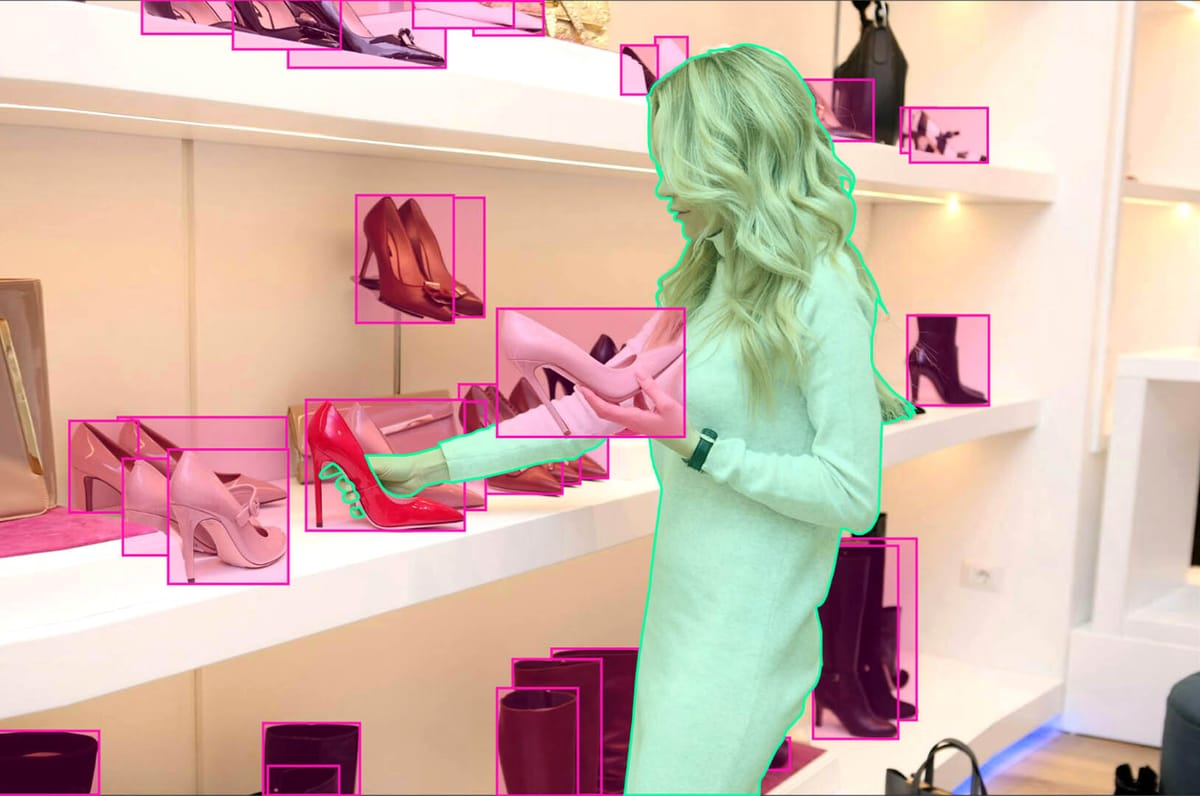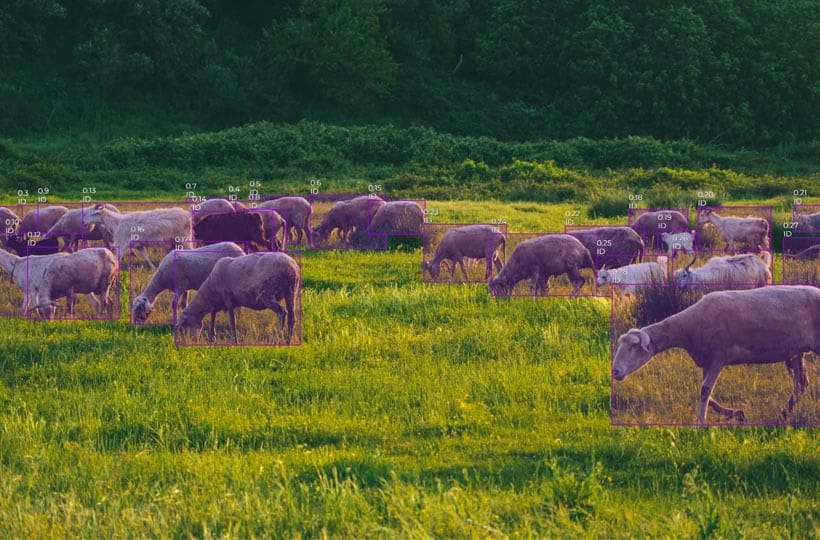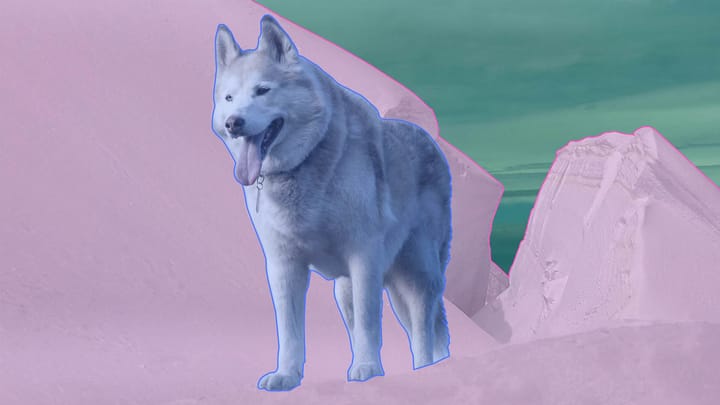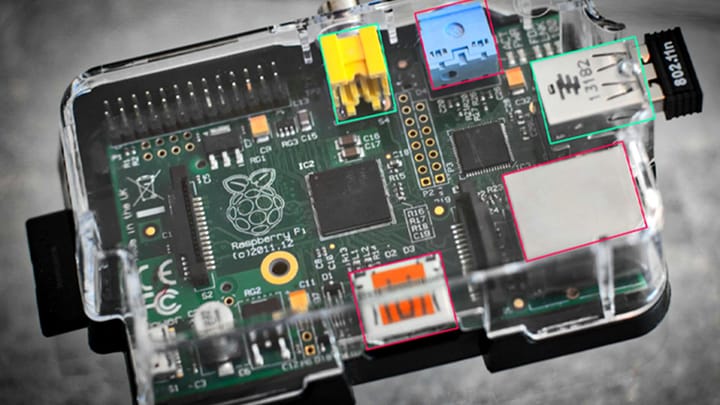Boosting Accuracy in Object Detection: Tips for YOLOv8

YOLOv8 stands out in the realm of object detection for its superior real-time performance and accuracy. This model uses deep learning to swiftly spot objects in images. It's a vital asset for sectors such as self-driving cars, security systems, and software that recognizes images.
For the best results with YOLOv8, developers need to focus on certain factors and methods. This includes starting off with clearly labeled and varied data and choosing models carefully. Additionally, adjusting hyperparameters and fine-tuning other settings is crucial. Mastering these insights is key in achieving precise and dependable object detection outcomes with YOLOv8.
Key Takeaways:
- Start with well-labeled and diverse datasets to enhance YOLOv8's object detection capabilities.
- Choose the appropriate model for the desired balance between speed and accuracy.
- Optimize image size and batch size for efficient performance.
- Adjust epochs and hyperparameters to fine-tune YOLOv8's training process.
- Understand the challenges of real-world deployment that can affect detection accuracy.
Understanding YOLOv8 and Its Evolution
YOLOv8, the newest form of the YOLO model, has redefined real-time object detection. It brings a significant leap in both speed and precision. This cutting-edge model has been updated to be more efficient and effective for spotting objects.
Developed by Joseph Redmon and Ali Farhadi, YOLOv8 shifts from using anchors to being anchor-independent. This change makes training simpler and boosts the model's accuracy on objects of any size or shape.
YOLOv8's move to an anchor-free design has changed the game in spotting objects in real-time, enhancing its flexibility and efficiency.
In the past, anchors were keys in YOLOv7 for locating object edges. Now, a more versatile method is in place, allowing YOLOv8 to detect objects with varying shapes. This leads to more accurate detections.
Furthermore, YOLOv8 brings in multi-scale prediction. This means it's better at spotting objects of different sizes by looking at each scale. With this approach, YOLOv8 offers superior accuracy for spotting objects in various scenarios.
YOLOv8’s multi-scale prediction elevates its accuracy and trust, outdoing past models in spotting objects on the fly.
Thanks to its game-changing features, YOLOv8 is a top choice for complex computer vision applications like autonomous driving, surveillance, and robotics. Its ongoing evolution and innovations have defined a new benchmark for object detection. Thus, making it a top contender for real-time detection across many sectors.
| Benefits of YOLOv8 | Applications |
|---|---|
| Superior real-time performance | Autonomous driving |
| Enhanced object detection accuracy | Surveillance systems |
| Flexibility in handling objects of different sizes and shapes | Robotics |
| Improved generalization to real-world scenarios | Computer vision |
Building a Strong Foundation: Dataset Essentials
The key to high-performing object detection using YOLOv8 is a well-structured dataset. It's vital to have a wide range of images for the model to learn effectively. Including diverse images enhances the model's detection across various settings. This broad exposure sharpens its accuracy in real-life scenarios.
For deep learning and object detection training, several vital considerations should guide dataset creation:
- Image assortment: Your dataset should span many items, angles, sizes, and views. This variety aids the model in accurate detection, making it adept in different scenes.
- Labeling: The success of a dataset hinges on precise labeling. Each item must be accurately tagged with its class and exact location, fueling the model's learning and item identification.
- Dataset construction: Creating a dataset demands careful selection of images and maintaining balance. Removing redundant samples and ensuring fair class distribution is essential to prevent any bias.
- Background selection: Select backgrounds that mimic real-world settings for model deployment. By adding diverse indoor and outdoor sceneries, you aid the model in better generalizing, cutting down false alarms.
- Labeling validation: Thorough checks of the labeling process are crucial for model accuracy. Regular audits of training batches to confirm label precision prevent inaccuracies from affecting the model.
For the dataset's construction and diversity's role in accuracy, consult the table below. It details how specific dataset aspects influence object detection success:
| Dataset Characteristic | Impact on Accuracy |
|---|---|
| Image assortment | Improves the model's adaptability for detecting items in a variety of scenes. |
| Labeling accuracy | Correct and consistent labeling enhances the model's perceptiveness to item details. |
| Background selection | Relevant backgrounds decrease incorrect detections, refining overall performance. |
"By crafting a varied dataset with precise labeling, you establish the core of a powerful object detection framework. This dataset's quality and diversity significantly influence the accuracy and versatility of the YOLOv8 model."
By meticulously covering these dataset essentials and crafting a top-notch dataset, your YOLOv8 model stands a better chance at precise, dependable object detection.
Model Selection Strategy: Balancing Speed and Accuracy
Choosing the optimal model for object detection involves a delicate balance between speed and precision. YOLOv8 provides a selection of models, each with its unique benefits and challenges.
YOLOv8 Models:
YOLOv8 encompasses a variety of versions, including YOLOv8s, YOLOv8m, and YOLOv8x. Their primary distinction is in the compromise between swiftness and correctness. Models such as YOLOv8s prioritize speed, making them quicker but less accurate. In contrast, YOLOv8x focuses on accuracy, necessitating more computational power.
Speed and Accuracy Considerations:
The choice of model is dictated by your specific needs. For a modest dataset or limited computational abilities, a smaller model with pre-trained weights, like YOLOv8s, efficiently detects objects without considerable computational strain. Alternatively, a dataset of greater magnitude may warrant the use of a larger model, such as YOLOv8x, for heightened precision.
Customized Approach:
As the scope of your dataset enlarges, adopting a bespoke model selection strategy becomes pivotal. Tailoring the model to fit the nuances of your dataset from the ground up refines its performance and accuracy further.
An essential consideration is not just the accuracy demanded by your tasks, but also the available computational resources. Striking the ideal balance between speed and precision ensures the effective and efficient detection of objects using YOLOv8.
Comparing the speed and accuracy of various YOLOv8 models:
| Model | Speed | Accuracy | Computational Resources |
|---|---|---|---|
| YOLOv8s | Faster | Lower | Lower |
| YOLOv8m | Moderate | Medium | Moderate |
| YOLOv8x | Slower | Higher | Higher |
By investigating the performance of these models, an educated decision can be made. It should be based on the alignment of their trade-offs with your project's needs and the resources at your disposal.
Role of Image Size and Batch Size in Model Performance
The choices of image size and batch size significantly affect the YOLOv8's performance. This discussion examines their impact on the model's accuracy and computational demands.
Image Size
Image size signifies the dimensions of photos used for detection. Bigger images might boost accuracy by capturing finer details. It also lessens the chance of missing small objects. However, note that this approach demands more from your computer.
Working with larger pictures means the model processes more information. This extra computation can slow down real-time performance. Finding a sweet spot between image size and computer power is key for top performance.
Batch Size
Batch size is the quantity of images treated at once during training. It directly impacts memory use and model learning. Your choice depends on how much computer power and memory your system has.
Using a small batch saves memory but slows down learning. A larger batch might learn faster, but it could overload your memory. This balance is essential for an effective training setup.
Optimal batch selection involves balancing memory and learning pace. It takes some trial and error to pinpoint the ideal batch size for your setup. Regularly observing the model's training helps fine-tune this choice.
Ultimately, image and batch size affect the YOLOv8 model's accuracy, usage of computer resources, and learning efficiency. Maximizing the model's potential requires finding the right mix of these two elements.
| Factors | Image Size | Batch Size |
|---|---|---|
| Impact | Affects model accuracy and computational need | Changes memory consumption and learning speed |
| Benefits | Potentially enhances accuracy | Results in quicker convergence and better learning |
| Trade-offs | More computation required | Memory issues and slower learning possible |
| Recommendations | Select image size for needed accuracy and computer capability | Determine batch size considering memory constraints and learning efficiency |
Implications of Epochs and Hyperparameters on Training
When training the YOLOv8 model, we must carefully consider epochs and hyperparameters. These aspects are critical for the model's performance and accuracy. Understanding how they influence training helps optimize our results.
Epochs:
Epochs define how many times the model sees the dataset in training. More epochs allow the model to learn more from the data. This can result in better accuracy.
Hyperparameters:
Hyperparameters control different aspects of the model's design and learning process. They include the learning rate, batch size, and functions used. Adjusting these can improve how well the model interprets complex data.
Balancing epochs and hyperparameters is crucial for proper YOLOv8 model training. Too few epochs might not fully train the model, while too many can cause issues like overfitting.
Finding the best hyperparameters requires careful testing. The choices made greatly influence how well the model performs on your data.
By fine-tuning epochs and hyperparameters, the YOLOv8 model's accuracy can be improved. This leads to better detection results.
Training the YOLOv8 model can be demanding. It might need more computer power and time for big datasets. Yet, the right settings for epochs and hyperparameters greatly enhance model accuracy.
Maximizing the benefits of epochs and hyperparameters demands detailed testing. Watching key performance metrics during training is essential.
Knowing how epochs and hyperparameters affect training helps achieve great object detection. With this insight, training YOLOv8 becomes more efficient.
Reasons to use Optimized Epochs and Hyperparameters
Improved model convergenceEnhanced accuracy and precisionReduced risk of overfitting or underfittingBetter generalization to unseen dataEnhanced model interpretation and understanding of complex data
Understanding how epochs and hyperparameters impact the model shows YOLOv8's true capabilities.
| EPOCHS | HYPERPARAMETERS | MODEL PERFORMANCE |
|---|---|---|
| Low | Suboptimal | Poor accuracy, underfitting |
| High | Suboptimal | Overfitting, low generalization |
| Optimized | Optimized | Superior accuracy, excellent generalization |
Getting the right balance in epochs and hyperparameters is key to YOLOv8 success. It unleashes the model's potential, improving detection accuracy.

Why the Actual Detection Accuracy is not so Promising
Accurately detecting objects in real-world settings presents several challenges. A major issue is the difference between the data used to train the models and the data they encounter in the field. These variations can be in object appearances, their orientations, and especially the lighting conditions. These discrepancies greatly hinder the model's ability to apply its learnings effectively in real-life situations.
Every real-world setting is unique, leading to diverse challenges. Mismatched lighting conditions can make objects seem very different, affecting their visibility and contrast. This, in turn, makes it hard for algorithms to perform accurate object detection under these circumstances.
Objects themselves vary, sometimes in ways not fully covered by the training data. Their shapes, sizes, and orientations might differ significantly from the examples the model has seen. Thus, the model can struggle to recognize objects that deviate significantly from what it is trained on.
"Accurate object detection in real-world deployment scenarios requires innovative solutions to overcome the challenges posed by data disparity, variations, and diverse lighting conditions."
The Importance of Data Diversity
Enhancing the variety within the training data is key to better detection. By adding numerous object types, orientations, and lighting situations to the training, the model becomes more adaptable. It is better prepared to face the variety found in real applications, thus performing more accurately.
Innovative Approaches for Lighting Conditions
Tackling the issue of varied lighting requires inventive solutions. One method is to add artificially created light variations to the training data. This helps the model learn to see past lighting differences. Using techniques like histogram equalization also enhances object visibility, aiding in better detection under challenging lights.
Handling Object Variations
Dealing with different shapes, sizes, and object variations requires specific tactics. Data augmentation can be used to introduce these variations artificially. Another method is to provide the model with supplementary data that showcases various object characteristics. This boosts the model's ability to detect objects accurately, despite their many differences.
By tackling issues of data mismatch, variations, and lighting conditions, the accuracy of object detection can see significant improvement. This enables the successful use of these algorithms in real-world applications.
| Challenges | Solutions |
|---|---|
| Data Disparity | Increase diversity of training data Apply data augmentation techniques |
| Variations in Object Characteristics | Use data augmentation to introduce variations Incorporate additional training data with diverse characteristics |
| Lighting Conditions | Augment training data with artificially generated lighting conditions Apply histogram equalization or image enhancement techniques |
Existing Methods We Can Optimize
There are various methods to boost object detection accuracy. By refining these techniques, your model can perform better, yielding more precise outcomes.
Dataset Extension
Expanding your dataset is paramount for improved accuracy. This involves gathering more data specific to real-life scenarios. Collect images from different angles, lighting, and object types for a comprehensive reference. A larger, more varied dataset equips your model to accurately spot objects in any setting.
Feature Extraction
Utilizing feature extraction enhances how your model learns. It discerns objects better by highlighting key details like edges and shapes. These details, captured through extraction methods, refine the model’s accuracy in object identification.
Leveraging Multiple Algorithms
Deploying a mix of algorithms can also raise accuracy significantly. YOLO-ReT as an instance, integrates various algorithmic strengths. By amalgamating different tools, you capitalize on a wider data analysis horizon, improving detection accuracy while meeting speed requirements.
"The key to optimizing object detection accuracy lies in leveraging dataset extension, feature extraction, and multiple algorithms to enhance model performance and achieve more accurate results."
Implementing the aforementioned strategies enhances your model's accuracy. A model enriched with dataset diversity, feature extraction, and algorithm synergy performs better in spotting objects accurately and reliably across varied environments.
Evaluating and refining your model over time is key. Continuously check its performance and tweak parameters for optimal results. This process ensures your model operates with the highest accuracy possible.
Now equipped with strategies to refine object detection accuracy, you're ready to advance your model's performance.
| Method | Description |
|---|---|
| Dataset Extension | Adding more diverse and representative data to the dataset to improve model performance. |
| Feature Extraction | Extracting meaningful features from the training data to enhance the model's understanding and interpretation of objects. |
| Leveraging Multiple Algorithms | Combining different algorithms, such as YOLO-ReT, to take advantage of their individual strengths and improve overall performance. |
Optimizing these methods markedly elevates your model's accuracy, ensuring it detects objects with greater reliability and precision.
Next Step - Training the Model with Your Own Dataset
To boost object detection accuracy, custom training the YOLOv8 model with your dataset is essential. It lets you adjust the model for your unique needs, ensuring the best performance and accurate results. The process of training YOLOv8 with your data includes key steps:
- Dataset Annotation: Annotating your dataset with object bounding boxes is crucial. It's vital for the model to learn correctly. Roboflow is an excellent, user-friendly tool for this, simplifying image annotation tasks.
- Training with YOLOv8: Train your model using the YOLOv8 architecture. YOLOv8, known for its real-time efficiency and accuracy, forms a solid foundation. By enhancing it with your annotated data, you're sharpening its focus on your specific goals.
- Monitoring Training Progress: Keep an eye on training progress by linking your Google Colab notebook to Ultralytics HUB. This setup makes it easy to observe metrics and charts. It helps in tweaking the model’s settings as needed, ensuring it performs optimally.
- Downloading the Trained Model: After training, download your YOLOv8 model. This model is then ready for use in object detection, providing accurate insights in real-world settings.
These steps are pivotal for enhancing the precision and efficiency of your object detection setup. Training YOLOv8 with your data allows you to tackle distinct challenges, leading to better results in your specific use case.
Custom training the YOLOv8 model with your dataset unleashes its true potential. It offers a precise and tailor-made solution for your application’s needs. By dedicating time and effort to this training, witness the considerable improvement in your object detection accuracy.
Summary
To enhance object detection accuracy with YOLOv8, developers need to apply various techniques. This includes optimizing datasets, choosing the best model, and tuning parameters. These practices, coupled with a deep understanding of YOLOv8, lead to superior accuracy in detecting objects.
The evolution of YOLOv8 continuously improves its speed and accuracy. This establishes it as a premier tool within computer vision. With unmatched real-time performance and advanced algorithms, YOLOv8 offers precise and efficient object detection.s.
FAQ
What is YOLOv8?
YOLOv8 stands out as a cutting-edge model for detecting objects. Its key strengths include top-notch real-time ability and high accuracy in seeing systems.
How can I improve the accuracy of YOLOv8?
To up the precision of YOLOv8, kick off with default setups and closely examine your training outcomes. Ample, accurately marked datasets are a must for fruitful object spotting with YOLOv8.
It's vital to grasp the significance of precision-recall curves and mAP scores. They are crucial in honing your object detection prowess.
What are the improvements in YOLOv8 compared to previous versions?
Compared to its predecessors, YOLOv8 shines in both speed and accuracy when spotting objects in real time. It has shifted from using anchors to a more flexible, anchor-free design.
This shift simplifies training and adds versatility. Not to mention, the inclusion of multi-scale prediction has bolstered its capability to find objects of different sizes.
What role does the dataset play in achieving high object detection accuracy?
The bedrock of top-tier object spotting with YOLOv8 is a well-rounded dataset. A varied selection of precisely labeled images aids in generalization.
It betters the model's capability to find objects across various situations. Paying attention to the background and ensuring precise labeling also makes a significant difference.
What factors should I consider when selecting a YOLOv8 model?
When picking a YOLOv8 model, weigh your need for speed against the accuracy you want. For top accuracy, consider models like YOLOv8x, but remember, they do need more computing power.
For smaller datasets, using pre-set weights might be a smart approach. This simplifies efficient object detection without the high demands on your computer. For larger datasets, customizing the model from the ground up is the way to go.
How do image size and batch size affect YOLOv8 performance?
The size of your images and the batch size you choose are critical in your YOLOv8's efficiency. Bigger images might up the accuracy, but they definitely require more processing power.
The batch size impacts how fast and well the model learns. Finding the sweet spot that balances memory use with effective learning is important. Achieving the best performance with YOLOv8 depends on these choices.
What parameters impact the training and performance of YOLOv8?
Training YOLOv8 involves tweaking the model with changes in epochs and hyperparameters. The number of epochs decides how many times your data is trained over.
Hyperparameters, on the other hand, control many model aspects. The key is to correctly adjust these to reach the best YOLOv8 training.
Why is achieving high detection accuracy in real-world scenarios challenging?
The challenge comes from differences between the datasets used for training and those for tests. These differences can include various object types, their positions, and light conditions.
Bridging this gap requires innovative methods. These methods would help object detection systems perform better in real-life situations.
What methods can be optimized to improve object detection accuracy?
Improving object detection can be done by adding more data that suits your real-world environment. This can include extractions from features and using various algorithms.
While doing this, maintaining real-time capabilities is crucial. This ensures your model is both fast and accurate.
How can I train the YOLOv8 model with my own dataset?
Training YOLOv8 with your data is a good move. Tools like Roboflow for annotation and training with YOLOv8s help in getting better outcomes.
Using Google Colab and Ultralytics HUB for training and tracking makes the whole process smoother. Finally, the trained model is ready to be used with YOLOv8 for object spotting.
What is the key takeaway regarding object detection accuracy with YOLOv8?
Maximizing object detection accuracy with YOLOv8 calls for a blend of strategies. These include optimizing your dataset, choosing the right model, and fine-tuning your parameters.
By employing these practices, developers can lift their object detection systems to achieve superior accuracy in real-world settings.



Comments ()